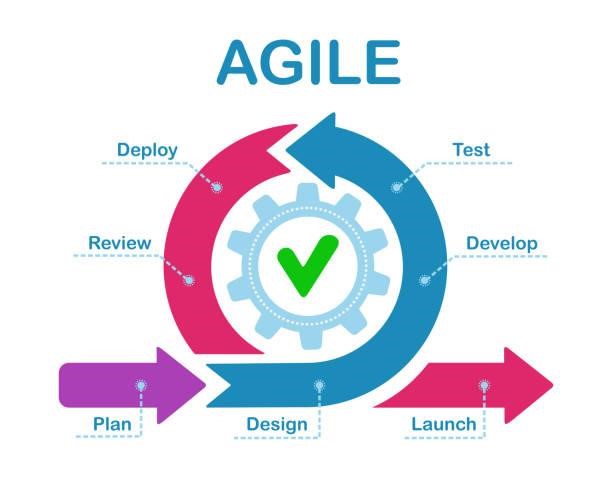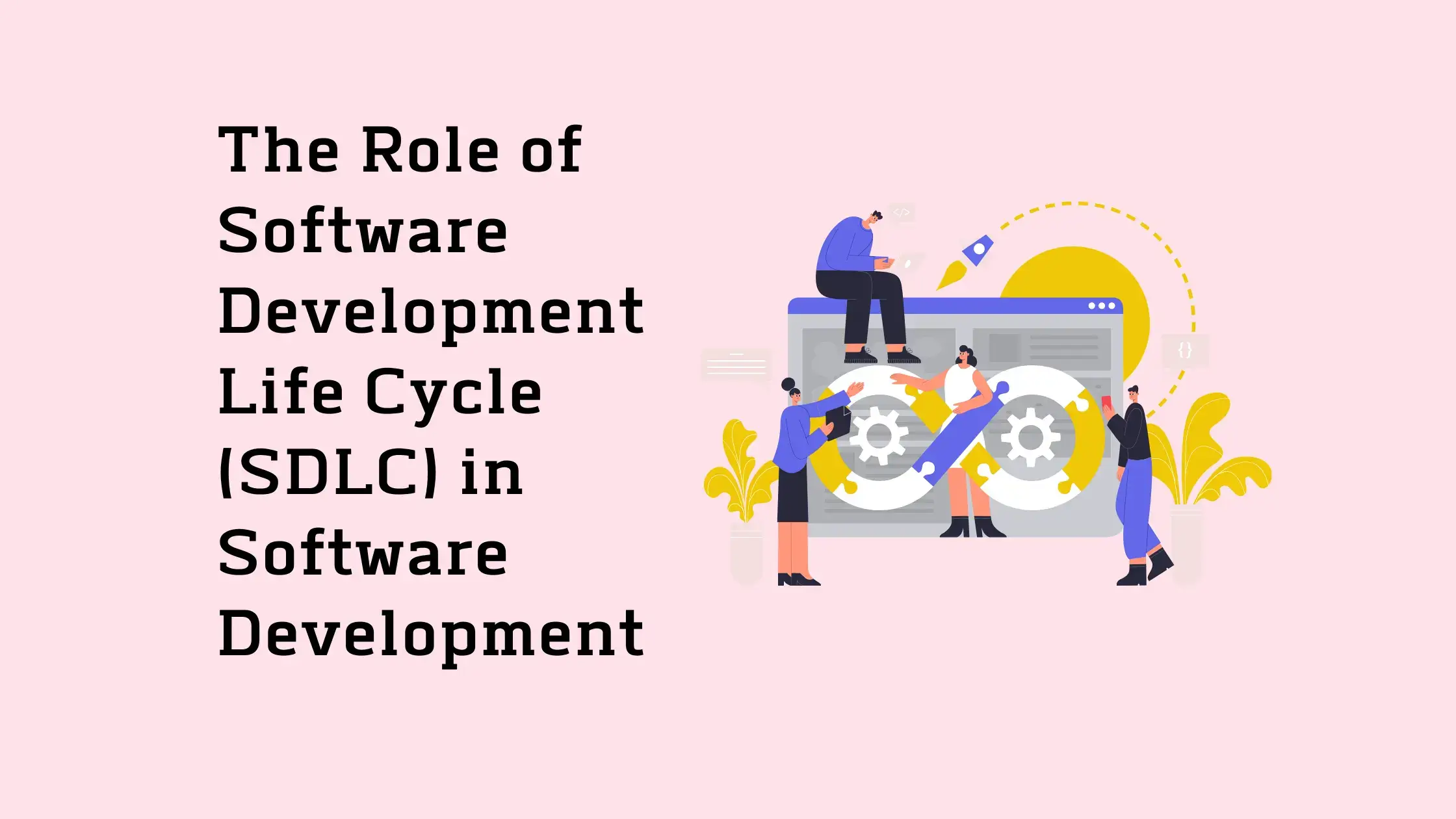Software Development Life Cycle (SDLC) is developing software of the highest quality and with the lowest cost. Please find out the way we perceive this SDLC process.
While the tools, techniques, and methods for creating high-performance and scalable software services have evolved, the roles and actions still need to be. The Software Development Life Cycle (SDLC) globally is a sequence of key phases defining teams that produce and distribute top-quality software. This article will review information related to the SDLC and its phases in more in-depth.
We offer the best solutions in the Software development lifecycle (SDLC) in the process of software development.
What is the Software Development Life Cycle?

The Software Development Life Cycle refers to the stages of work required to create software applications. Each phase is associated with the role, or responsibility participants to the software need to know, manage, and optimize to provide software applications at high speed and efficiency. The stages of work are:
- Requirements Gathering,
- Software Design,
- Software Development,
- Test and Integration,
- Deployment,
- Operationalization and Maintenance.
Let’s talk about each phase of the process in more detail.
The Phases of the SDLC
Requirements Gathering
- In this process phase, the team determines the needs, gathers information, and defines the current issues, requirements and requests, and expectations concerning the software or service.
- A few of the activities that are part of gathering requirements include creating software specifications, preparing the details of a plan, documentation issues tracking, product or project planning, and distributing the appropriate resources.
- Defining the requirements for software or products will give teams the understanding and understanding needed to develop and develop the software they need to create.
Software Design
- In the design stage, The team is responsible for making software design decisions on the structure and design of the solution. This aspect may involve creating design documents and code guidelines and discussing the practices, tools, and runtimes or frameworks to help the team meet the software requirements and goals established during the requirements-gathering phase.
Software Development
- At this point, teams develop the software solutions on the design decisions taken. Teams use the solution to achieve the objectives and results established during the requirement-gathering phase.
- The development process can include teams of individuals, new technologies, and unexpected problems; however, teams in development usually collaborate with tech leads and project or product managers to clear the way and make decisions or provide assistance. This phase of work is completed after the teams are packaged up and developed their code.
Test and Integration
In this phase, the software is tested and packaged to ensure its quality of the software. Quality assurance or testing ensures that the solution is in line with the standards for quality and performance. This aspect involves unit testing, integration and end-to-end tests, verification/validation, and reporting or identifying bugs or defects in the software solution.
Deployment
At this point, the software is then installed in a production environment. The information gathered, created, developed, and tested is available to the customers and users using the service. This aspect includes provisioning infrastructure for an on-premise or cloud service and developing an approach to software deployment, making the changes available to the customer.
If you’re interested in learning more, we go over the different deployment strategies and explain why and when to use each deployment strategy.
Operationalization and Maintenance
- The software is in operation to ensure no issues or incidents relating to the implementation. This process could include reviewing, understanding, and monitoring network settings, infrastructure configurations, and production efficiency. This aspect may involve handling or resolving an incident when problems or modifications affect a user or customer base.
- Many programmers have to wait for months or even years for code changes to make available to users. There needs to be more transparency in communication, collaboration, and visibility throughout the process. Teams and companies with the capacity to make changes on demand or self-service enable their teams to keep performing their best work.
- The deployment of production efforts leads to an average of 25 hours of engineering time.
DORA metrics graph
- The SDLC provides a view of the various phases of work required to create software. Understanding the work process helps teams avoid delivery problems by establishing and maintaining checks and balances earlier throughout our development and delivery process.
- It’s also about taking feedback into account and insight into developing software to deliver value continuously, quickly, and in a predictable and long-lasting manner.
- Understanding the SDLC can help teams enhance their DevOps performance measured by DORA metrics.
Examples related to a Software Development Life Cycle Model

Unplash
Software developers, computer scientists, practitioners, and leaders have always strived to create superior software quickly. Over time, various concepts (such as waterfall, spiral, and Agile) have emerged to describe and depict the SDLC processes and manage the complexity of the development of in-demand tools, processes, and the way of thinking.
Waterfall Model
One of the first models used to depict the delivery method was the waterfall model, created in 1956. The model uses a series of linear sequential steps representing the processes involved in providing software.
Each phase depends on the execution and delivery of the previous one, and each phase consists of an array of tasks. The concept originated in the construction and manufacturing industries and was later adopted for projects or knowledge-based work.
A Complete Guide related to the Waterfall Project Method
The disadvantage of this approach is its dependence. Because progress is a linear direction only, it left no chance to change to the newly discovered limitations, requirements, or issues after the design decisions were made and the implementation started.
Delivering all software could cause additional costs since changes to requirements could lead to massive overhauls, redevelopments, and the need to retest. These disadvantages result in modified waterfall models like Waterfall with Subprojects, Sashimi (Waterfall with Overlapping phases), Waterfall with Subprojects, and Waterfall with Risk Reduction.
Iterative and Incremental Model
In response to perceived issues of the waterfall model, organizations like those of the United States Department of Defense released statements, including the MIL-STD-498 document, which encourages “Iterative and Incremental Development.” This factor resulted in creating a term encompassing both an iterative approach to design and incremental development.
The program is created and released in this model type by repeated cycles of smaller work parts. This approach allows software developers to benefit from earlier knowledge and experiences when creating and using this software. Teams in each iteration of work will make necessary changes and develop additional functional capabilities.
The 1960s NASA project Mercury is an example of the first use of the Iterative and Incremental Development model. The program’s popularity eventually led to its acceptance as Project Mercury’s engineers recruited the model to other teams and projects.
While the model’s roots derive directly from software development, many embedded and hardware-based software development efforts use incremental and iterative methods (for example, firms like SpaceX or Rocket Lab).
The Evolution of Process Models
After its success with Iterative and Incremental software development techniques, various other software development methods came into use to implement more principles of project management as well as methods of development.
A risk-driven development approach motivates teams to execute based on specific project risks while leveraging the various elements from other delivery methodologies. In the 90s, the Agile manifesto was the catalyst for the acceptance and growth of the Agile model and the following Agile methods.
Today, we can use our own DevOps Life Cycle, representing our SDLC and our goal to deliver value through software as a multi-functional team continually.
What you create or do, develop or deliver, is entirely your choice. It’s crucial to know what’s going on in this process. This blog post explored the development lifecycle for software and its SDLC models that have emerged to help us build and distribute our software in the present. Best of luck to all managing or being a part of the project lifecycle!
Stages and Best Practices
Following the most effective practices and phases of SDLC ensures that the process runs efficiently, smoothly, and effectively.
- Identify the Current Problems
“What are the current problems?” This part of the SDLC involves obtaining input from all parties, such as salespeople, customers, industry experts, and programmers. Find out current systems’ strengths and weak points, with improvements as the aim.
2. Plan
“What do we want?” At this point in the SDLC, the team will determine the amount and type of resources needed to implement the requirements that have been analyzed. It also describes the risks involved and provides plans to mitigate those risks.
The team must determine the project’s viability and how they can carry out the project effectively with the least risk.
3. Design
“How will we get what we want?” This section of the SDLC begins by transforming the specifications for software into a design strategy, referred to as”the Design Specification. Everyone else then reviews this plan and provides input and recommendations. It’s essential to create the ability to collect input from stakeholders and then incorporate their suggestions into the document. If a fails, it is likely to lead to cost overruns in the best-case scenario and the complete collapse of the project at the very worst.
4. Build
“Let’s create what we want.”
This aspect is where the actual development process begins. Every developer must adhere to the blueprint that was agreed upon. Also, ensure you have guidelines on your code’s writing style and best practices.
For example, create an appropriate vocabulary for files, or specify a variable’s name style like camelCase. This aspect will assist your team in creating organized and homogenous code that is easy to understand and test in the following phase.
5. Code Test
“Did we get what we wanted?” In this phase, we check for any defects or deficiencies. We address those problems until the product complies with the original specifications.
Essentially, we want to determine if your code complies with the specifications.
Check out Stackify’s code profiler for free, Prefix, to write better code on your computer. The Prefix is compatible using .NET, Java, PHP, Node.js, Ruby, and Python.
6. Software Deployment
“Let’s start using what we got.”
- The aim is to install the software in the production environment to begin using the software. But, many companies choose to deploy the software through different deployment environments like the staging or testing environment.
- This factor lets interested parties play around with the product before making it available for sale. Additionally, it allows last-minute mistakes to be discovered before the product is released.
- The plan is rarely out perfectly when it’s in reality. In addition, as the circumstances are changing in real life, we must keep up-to-date and develop the software to keep pace with the changing conditions.
- The DevOps movement has transformed the SDLC in certain ways. Developers are now accountable for many more aspects of the development process. We also recognize the importance of moving left. Suppose development and Ops teams utilize the same tools to monitor the performance and identify any defects from the start to the finalization of the application. In that case, it gives them a common language and speedier handoffs between teams.
- App performance monitoring (APM) tools can be used in testing, development, or production environments. This factor ensures that everyone uses the same toolset throughout the entire lifecycle of development.
A further understanding of Examples
The most commonly used SDLC instances or SDLC models are listed below.
- Waterfall Model
- The SDLC method is among the most dependable and most easy. This method lets us complete one phase and begin the next. Each phase is a distinct mini-plan, and each step “waterfalls” into the next. The main drawback is that even small unfinished parts could cause problems throughout the process.
- Agile Model
- This Agile SDLC model breaks it down into cycles and provides an operational product quickly. This method produces a series of releases. Each release feed is tested and gives feedback on the information integrated into the following version. As per Robert Half, the drawback of this method is that the emphasis on interaction with customers can steer the project in an unwise direction in certain situations.
- Iterative Model
- This SDLC model is based on repetition. Developers develop a version quickly and at a relatively low cost, then test and enhance it with fast and frequent versions. One of the biggest disadvantages is that it could devour resources quickly when left unchecked.
- V-Shaped Model
- This SDLC method is tested at each development phase as a re-invention from the waterfall design. Like a waterfall, this method may encounter obstructions.
- Big Bang Model
- A high-risk SDLC model focuses most of its resources on development and is best suited for small-scale projects. It needs to be more thorough in the requirement definition phase of other models.
- Spiral Model
- The most flexible among the SDLC models The spiral model is like the iterative model due to its focus on repetition. The spiral model repeatedly goes through the design, planning, construction, and testing phases while making incremental improvements at every stage.
Expand Your Knowledge of SDLC Tools
Domain specialists, architect engineers, system developers, and even leaders share an interest in providing excellent software. You can familiarize yourself with the Development Life Cycle Documentation, Stages Of Development, Development Cost, Development Life Cycle Phases, Development Life Cycle Process, Development Life Cycle Stages, Development Of Software, Lean Software Development, Design Approach, and Design Element. Consider Object-Oriented Design, Conceptual Design Review, Conceptual Design Stage, Detailed Design, Requirement Collection, Architecture Risk Analysis, Project Goals, Major Components, and Individual Components
Conclusion-Benefits of the SDLC
SDLC, properly implemented, can provide the most comprehensive level of control over management and documentation. Developers are aware of what they must develop and why. Everyone agrees on the goals in advance and can clearly define a strategy for achieving the desired final goal. Everyone is aware of the cost and resources needed.
A variety of pitfalls could turn the SDLC implementation into an obstacle to development rather than a tool that aids us. The inability to consider the requirements of customers and everyone else involved in the process could lead to a poor understanding of the system’s requirements from the start. The advantages of SDLC only come into play when the plan is implemented with utmost care.
Do you want to improve the quality related to your applications and track the performance of your application through every step of the SDLC? Check out Stackify’s Retrace tool free of charge and discover the ways it can assist your company in creating better software.
FAQS
Why Does the SDLC Matter for Software Delivery?
As we learn further about the tasks involved in each element of the SDLC, we can then discuss why it is important and how it can be applied to the way we distribute software in the present. In many organizations, the problem is to deliver more efficient software in a shorter time. Knowing the SDLC helps teams understand what is required to bring new features or changes to code to clients.

Dr.Supreena has published two international books in finance with the able guidance of her guide and department at Ethiraj College of Women, University of Madras during her PhD in Economics and Finance. She is the Recipient of Dr Vedagiri Shanmugasundaram (An Oxford Scholar) Award for Outstanding and Successful PhD Candidate from Ethiraj College for Women concerning research record and academic distinction. She is experienced in the domain of finance, digital marketing and information technology writing on Artificial Intelligence, IoT, PaaS and SaaS cloud computing etc. She is NIIT qualified in Advanced Network Computing, Google Certified in digital marketing. Her hobbies to maintain balance and reduce stress are gardening and cooking.


